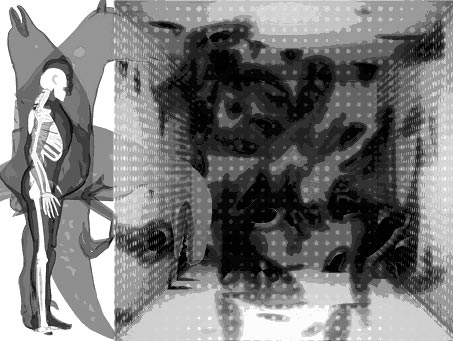ARCHITECTURAL INTERFACES OF HYBRID HUMANS
Ada Kwiatkowska
Abstrakt
The
idea of architectural form is influenced by the philosophical concepts
of human being. In digital age, the human body is confronted with the
concepts of avatar, cyborg or hybrid being. Development of digital technologies
broke the barriers between the body and machine, extending the sensory
and mental abilities of humans. Discoveries of genetic engineering allow
to manipulate the human genes and announce the concept of a man as designed
being. This concept will have an influence on the future architectural
forms and mutual relations between a man and the built-environment. The architects
define
the future generations of architectural forms in relation to changes of
human bodies' concepts. Some of the architectural visions focus on the
interactive relations between the mutable human body and transformable
spatial settings on different levels of architectural objects' complexity.
New generations of architectural forms are A.I. structures operating in
the trans-bio-technological ecosystem. They are based on data transmitting
and mutual conversion of info-energy-matter-space-time parameters in the
topological space. Architectural patterns of digital age are based on
the higher order, higher complexity of systems and active power of information
forcing the A.I. of spatial structures. The question is, whether liberating
the architectural forms and forcing the intellectual power of structures
to interact with evolving human body will extend the human perception
or will be a trap for human mind?
Artykuł:
Kwiatkowska, Ada, „Architectural Interfaces of Hybrid Humans”, [w:] Rethinking the Human in Technology-Driven Architecture, M.Voyatzaki, C.Spiridonidis (eds.), EAAE / ENHSA Conference Proceedings, Chania'11, Thessaloniki: Charis Ltd: 2012, s.363-370. (ryc. Ada Kwiatkowska)


Copyright © 2025